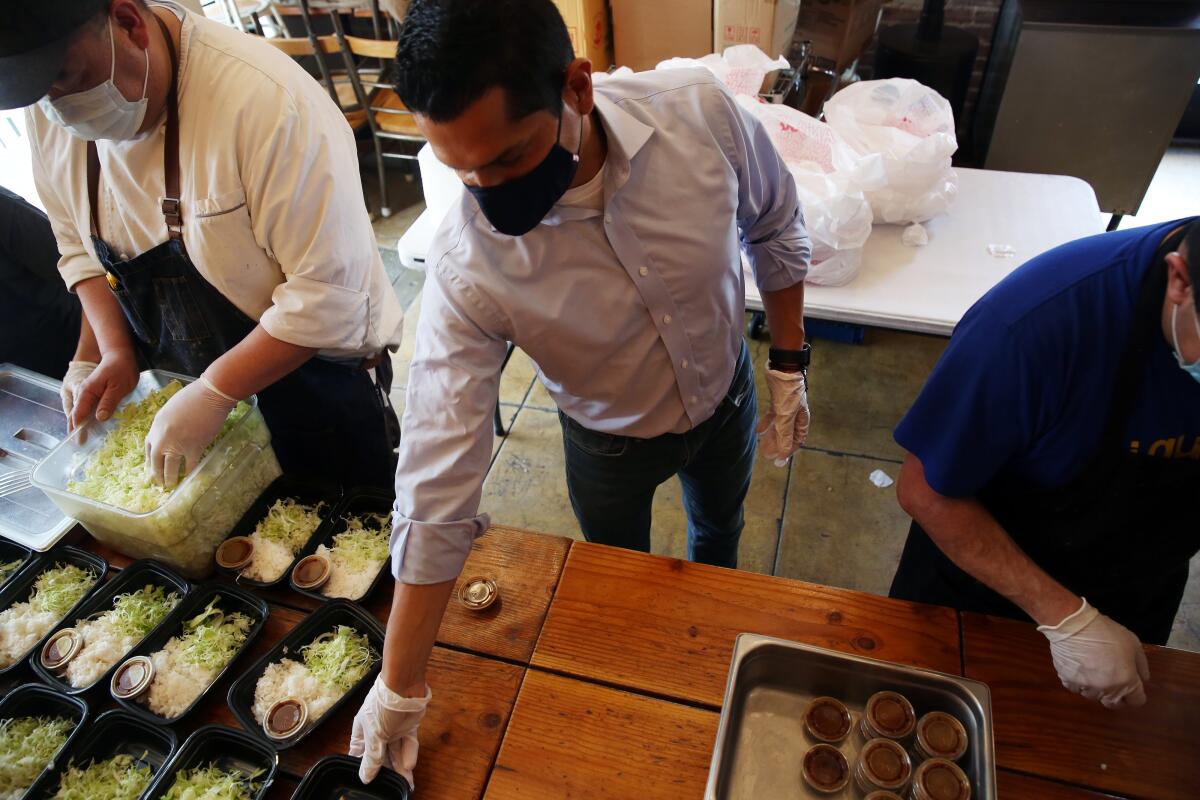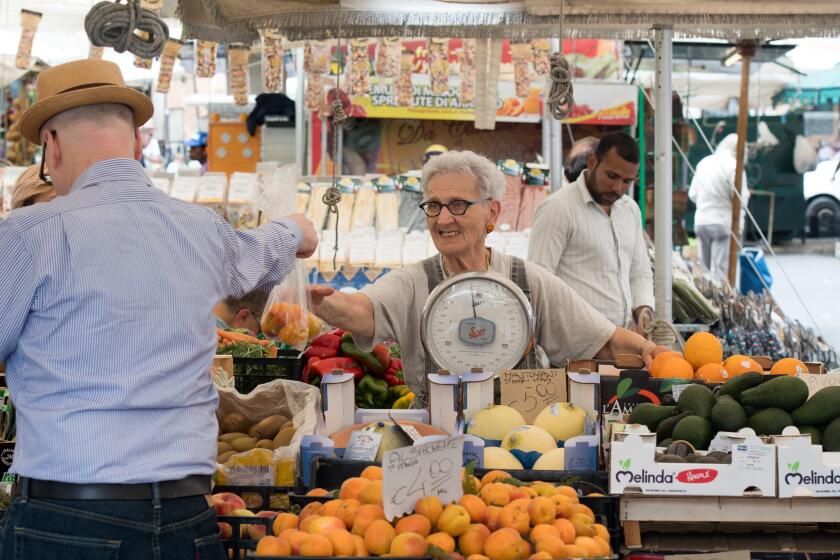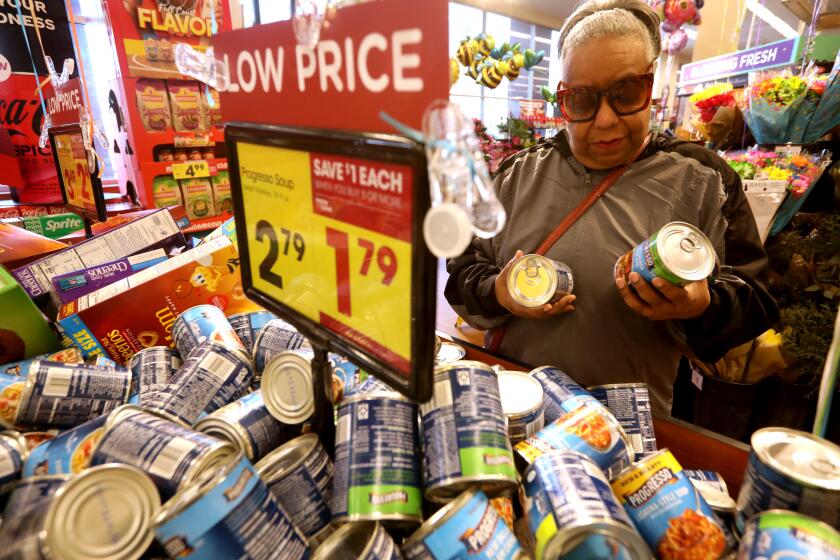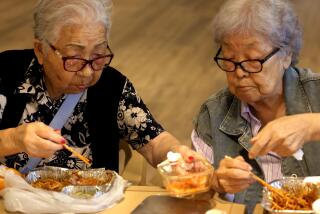How do you help homebound, hungry seniors? These services deliver free meals

When Elizabeth Shayne had a hip replaced and her husband, Harry Shayne, had the same done to both of his knees in 2016, they became homebound. Simple tasks such as getting groceries and cooking meals became nearly impossible for the couple, who are now 78 and 79, respectively. They were at an impasse: They couldn’t afford to move into assisted living care, but they also couldn’t manage on their own.
“I have sciatica, and if I’m able to stand for five minutes, that’s a big deal for me,” Shayne said over the phone. “So my cooking days are over.”
The Shaynes are Jewish and live in the Pico-Robertson area of Los Angeles, home to a vibrant Jewish community. And every week, neighbors bring over extra food from their Shabbas meals.
Happily, the couple doesn’t have to rely solely on the kindness of the people around them. Every day a driver stops by about 10 a.m. and delivers a meal provided by Jewish Family Service of L.A. that has a protein, a vegetable, a carbohydrate and fruit. The Shaynes were covering at least part of the cost of the services until the pandemic hit and they were unable to afford it, but Jewish Family Service continued delivering meals for free, no questions asked.
“Younger people would not enjoy this food, because this food is perhaps on the plain side, but I’m saying that [as] complimentary because we can’t eat the salt,” she said , referring to her husband’s heart condition. “We’re very pleased with what we have because with what we have, it’s keeping us alive.”
A Federal Reserve survey about consumer finances found that a growing number of Americans are in debt in retirement, when income is limited.
Several community organizations and government contractors in L.A. County offer this sort of help to food-insecure seniors. Revolution Foods has become the latest partner in L.A.’s Rapid Response Senior Meals Program, alongside Everytable. Seniors living in the city can sign up to have five free meals delivered on a weekly basis.
The L.A. City Council provided enough money in November for 5,800 seniors to join the Rapid Response Senior Meals Program, Revolution Foods said in a news release. The city is focusing its efforts on “low-income and homebound seniors in underserved neighborhoods, including South L.A., Southeast L.A., Boyle Heights, Pacoima and North Hills,” the company said.
“What we do is we work with mission-driven community-based organizations, nonprofits, that are very embedded in the communities that we’re trying to serve,” said Laura Trejo, director of the recently established Los Angeles County Aging and Disabilities Department. “So we’re not reinventing or duplicating effort, we are actually supporting and elevating it.” Trejo said that last year it delivered 1.7 million meals to people’s homes and 2.5 million meals in congregate settings where people eat together, cafeteria-style.
It can be hard to identify all the free meal services in your neighborhood, but the Aging and Disabilities Department website lists nutritional programs by city. Individuals also can enter their ZIP Code in Foodoasis.la, a free service that enables anyone to find food pantries and meal services near them. Another option is to call 211, which refers people to Health and Human Services, although the directory can be long and confusing to navigate.
Trejo said the hope is to eventually implement a “no wrong door” system for L.A. County services that will make it easier for seniors to get in touch with the right government agency to get the support they need.
When a 91-year-old grocery clerk can’t retire without a GoFundMe campaign, the nation has a serious problem. We know how to fix it.
Seniors like the Shaynes face challenges in the vast urban sprawl of L.A. County, one of the most expensive regions in the country. The number of county residents ages 60 and older is expected to grow 171% from 2010 to 2060, and many of them will have fixed incomes and limited mobility.
A 2010 study by UCLA professor Imelda Padilla-Frausto found that seniors in California need incomes at least twice the federal poverty level to make ends meet. And it wasn’t until 2019 that low-income seniors and people with disabilities in California became eligible to receive food assistance from CalFresh.
UCLA professor Kathryn Kietzman, who studies health equity, said the great thing about free meal programs funded by the federal Older Americans Act is that there are fewer barriers to eligibility. Seniors with incomes just above the poverty level often don’t qualify for public programs but have needs that they can’t fulfill without help, she said. These struggling middle-income seniors, whom Padilla-Frausto calls the “hidden poor,” may be forced to choose “between how much food they get every month and how much medication they’re able to get every month,” Kietzman said.
YWCA San Gabriel Valley’s food service, which is funded by L.A. County, has been one of the largest meal providers for people over 60 since 1986. To provide culturally relevant meals in the area, the YWCA works with the San Gabriel-based Chinese restaurant Rolling Wok.
But the onset of the pandemic in 2020 marked a significant change for the organization, when it shifted from in-person food services to deliveries and pickups out of concern for the health of older staff members. Its search for new vendors led it to Revolution Foods in the City of Commerce.
Strategies for coping with inflation and rising grocery prices? Coupons, bargain bins, rationing and ‘cereal for dinner’
“We were looking at bids, we were looking at what all of the catering companies were offering,” said Christie Valenzuela-Ruiz, who manages the YWCA’s senior services. “Revolution was able to come in and provide the frozen meals and to do it in such an efficient way that it really met that need.”
“There’s been a significant amount of food inflation in the last four years or so,” said Dominic Engels, chief executive of Revolution Foods. Before serving seniors, Revolution Foods was providing meals in K-12 schools in California. As a public benefit corporation, Revolution Foods has to be able to show that its work is making a difference in the communities it serves, Engels said.
For Trejo, this work is about building a future that she wants to live in. “I’m 64. So I’m part of the aging population, I am talking about me,” she said. She doesn’t often hear detractors push against these types of social programs, but when she does, she reminds them it’s about reciprocity. “It’s our turn. ... It’s how it’s supposed to work,” Trejo said. “In families, you raise the kids, the kids then later help to take care of you. Society does that too.”
More to Read
Sign up for Essential California
The most important California stories and recommendations in your inbox every morning.
You may occasionally receive promotional content from the Los Angeles Times.













